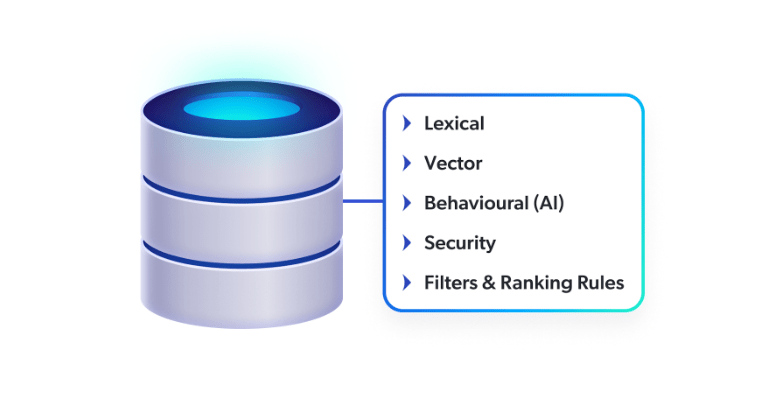Do you know where a lot of companies miss the mark on customer self service?
Many overly focus on adoption. They think customers prefer to bypass self service in favor of a human agent. The belief is that customers desire speed over convenience when resolving a support issue or answering a question.
But customers can have both — and companies can benefit, too. In the 2025 Customer Experience Relevance Report, 84% of 4,000 consumers said they put in moderate to high effort to find information online. And over half cite “not being able to easily search and find information” as their biggest self-service frustration.
The disconnect between what companies provide and what customers actually want is why customer self-service often fails.
When you build a self service solution around your internal structures versus actual customer needs, your customers will inevitably hit roadblocks that require them to escalate their issue to a human agent — or abandon your website completely. And this scenario plays out to the tune of $3.7 trillion in global revenue at risk annually.
From a support perspective, the self service customer journey must be thoughtfully and intentionally addressed across every touchpoint and interaction. It requires an endless self service solution that puts your customers’ desires and needs at the heart of every interaction.
Relevant reading: Relevance Report 2025 | Customer Effort Is at an All-Time High — Is Search the Key?
The Reality of Today’s Digital Customer Support
When a customer fails to solve a problem on their own after they’ve gone through your self service content and pathways, it generally means you’ve missed the mark when it comes to understanding customer behavior. Customer support journeys aren’t linear.
According to recent research from Gartner and our recent CX Relevance Report:
- Customers use an average of three to four different channels when seeking support or information, a multi-channel reality that creates significant friction.
- Over 40% of our survey respondents said that inconsistent communication across departments was a major pain point when searching for information.
- When customers can’t find what they need, they’re unlikely to stick around — 72% will abandon a brand’s website after a frustrating self-service experience, turning to Google or competitor websites instead.
- Nearly three quarters of consumers attempt self-service, but only 14% successfully resolve complex problems on their own.
For years, we’ve used self-service as a barrier rather than an enabler. It was designed to reduce costs, not to create great customer experiences.
The end-to-end customer experience isn’t about you. It’s about your customers. It requires that you understand how customers look for information and resolve problems. Then you must create a connected ecosystem that allows information to flow easily across touchpoints.
Why Self-Service Customer Service Fails
There are some common issues that come up a lot when self-service falls short of meeting customer needs. Here is a summary of the most common reasons that self-service fails.
1. Your Company Information Is Siloed
When channels and content are owned by different teams, information tends to get siloed with a given department or person. It’s impossible to meet all customer needs, much less improve customer satisfaction, when company information isn’t connected and easily searchable. And in many cases, knowledge only resides in an employee’s head. When your information isn’t captured, documented, indexed, and made accessible from a central location, customers either get different answers depending on where they look — or they come up empty.
2. Search Requires Too Much Effort
Successful self-service relies on search: 43% in our CX Relevance survey said they “go straight to the search bar when they land on a website with a specific intent in mind.” With traditional search engines, customers must do the hard work of navigating what is often an overwhelming list of results and piecing together the answer to their issue. This is what we mean when we say “high customer effort” and, according to our CX survey, it’s a big reason self-service often fails.
3. Customer Journeys Are Unpredictable
Our own research revealed that customers use an average of three to four channels to interact with a company when seeking support, but they may use up to 10 (or more). Customers don’t navigate these channels predictably, and the path to resolution includes many stops. They gather information by interacting with your community forum, self service portal, automated support agents, other resources — and all of this takes effort.
And customers will always take the path of least resistance, so if a given support option becomes too frustrating (an unhelpful chatbot, a FAQ that lacks information about their issue, etc.) they’re likely to reach out to your support team or bail completely.

4. Channels Are Disconnected
The net result of so many channels and different paths to resolution is that a self service customer support journey will be a fragmented one if you don’t accommodate nonlinear behavior. Context gets lost from channel to channel when information and systems are siloed. A user may need to conduct the same search on your community form, your website, your customer portal, your AI self service tool, etc., then ultimately explain the issue to a human agent. It’s a process that forces the customer to repeat their problem multiple times and re-enter the same information over and over.
Relevant reading: Agent Assist: Why Your Contact Center Needs Proactive Knowledge Management
5. Some Issues Are Too Complex
Many self service resources are designed to answer simple or common questions and thus fall short when customers face complex issues. Problems may span multiple product areas, for example, or require detailed troubleshooting to resolve. They may also involve unusual edge cases that can’t be resolved through standard knowledge base articles or your support team. This added complexity is why so many customers attempt self service but ultimately need human assistance.
Relevant reading: The Many Problems of Case Deflection
Self-Service Approaches That Drive Resolution
Since customer service is never a one-size-fits-all endeavor, companies need a way to adapt in real-time to real customers. AI-driven solutions like generative AI can effectively meet this need, but only when they’re grounded in enterprise information and thoughtfully embedded into the self service experience.
The concept of “end-to-end self service” suggests there’s a definitive path from problem to research to resolution. But, again, people seek answers in nonlinear ways so it’s helpful to think of self service as an “endless” loop that provides answers consistently regardless of channel or interaction or touchpoint. Here are some strategies to achieve this:
Unify Everything
The first step toward better self-service is connecting all your company information so it works together as one system. Use AI-search as a smart connector that can reach into all your different content sources. You don’t need to move your content — the right platform connects to relevant information wherever it currently exists and can retrieve exactly what’s needed based on a customer query. This creates what we call an “intelligence layer,” a technological bridge that connects and makes sense of information from any repository.

Deliver Direct Answers
As we noted above, traditional search requires more customer effort, forcing users to sift through pages of results and piece together their own solutions. You can deliver direct answers with modern search that uses machine learning models to understand questions, complex queries, and user prompts. The other half of this is the GenAI piece, which reviews the source information and delivers specific answers drawn from your connected content sources.

Coveo clients Xero and Zoom improved self-service success rates by 21% using generative answering and Forcepoint achieved a 61% increase in case deflection.
Relevant reading: Insights and learnings from other tech leaders achieving real GenAI ROI
Connect Every Channel
As we discussed earlier, customers use many channels when seeking help. This doesn’t always indicate a flaw in your self-service design — it’s just how people find information these days.
Rather than forcing people into a prescribed path, embrace the multi-faceted, nonlinear journey by connecting your touchpoints with unified search and AI technology. The context should follow the customer. When someone moves from your help center to your self service portal to your community forum to a human support agent, their history and previous searches should inform each interaction, eliminating the frustration of starting over.
Let AI Guide the Journey
By 2028, Gartner predicts that 70% of customer service journeys will begin and end with conversational AI and nearly a third of Fortune 500 companies will have a single AI-powered customer service channel. But successful AI implementation requires more than just a rote self service software or a basic chatbot.
To be enterprise ready and prepared to address every customer interaction, you need an intelligent system that grounds new technologies, platforms, and systems in verified, up-to-date content. This allows AI search tools to understand customer intent, surface relevant information proactively, and maintain accuracy through robust and relevant information retrieval.
Measure and Adapt
One of the most oft-repeated best practices of implementing any new technology is to measure the impact of a POC and optimize your approach. Because new technologies are constantly emerging and customer preferences are always shifting, self-service isn’t “set and forget.”
Per our latest CX Relevance Report, 45% say “finding what I’m looking for in just a few clicks” has the biggest impact on brand perception. Since search is the heart of the digital experience, search analytics can help you reap a lot of insights that help you understand your customers.
To keep customer engagement high and customer inquiries resolved, monitor search patterns and track successful resolutions. This is how you can identify where customers struggle. Use behavioral signals like clicks and time spent on pages combined with customer feedback to sculpt the self-service experience.
This can mean indexing missed repositories to fill content gaps, creating articles to answer new questions, and even identify new product features that help increase share of wallet.
Relevant reading: 6 Proven Techniques for Customer Self Service Success
Take the Next Step: Connect Your Customer Experience
The data clearly shows that customers want to self-serve, but they need experiences that match how they actually seek and use information. The challenge isn’t to increase adoption, it’s to create connected experiences for your customer community that are relevant no matter how an individual user moves through your self service support ecosystem.
From the customer’s perspective, that means they can find the answers they need regardless of where they are in their information-seeking journey. When you unite your content sources with AI-search and enhance them with generative AI capabilities, you transform fragmented interactions into an endless support loop.
The goal here is not just to reduce costs, but to turn everyday service interactions into experiences that build trust and loyalty. Companies that create truly connected self service experiences deflect more cases while delivering the kind of effortless support that keeps customers coming back.



